Ginger Tea: A Natural Remedy for Period Bloating – An Indian Youth’s Guide
Menstrual cycles can be challenging, with cramps, mood swings, and the infamous bloating making it hard to function at your best.
If you’re an Indian youth juggling studies, work, and social commitments, the added discomfort of period bloating can feel like an unwelcome guest. But what if the solution lies in your kitchen?
According to age-old wisdom—something our mothers have always known—ginger tea is a simple, effective remedy for easing period bloating.
This blog delves into why ginger tea is a go-to solution for menstrual bloating and how it aligns with the lifestyle of Indian youth. Let’s explore how this golden elixir can make your period days a little easier.
Understanding Period Bloating
Period bloating occurs due to hormonal fluctuations, particularly increased levels of estrogen and progesterone. These hormones cause water retention, which leads to a feeling of puffiness or tightness, especially around the abdomen.
While bloating is a normal part of the menstrual cycle, it can be uncomfortable and frustrating.
Why Do Indian Youth Face More Challenges?
As a young Indian, you may already have a hectic lifestyle, balancing academics, work, or other responsibilities. Add to this the cultural expectations and dietary habits that sometimes lean heavily on processed foods, salt, or caffeine—all of which can exacerbate bloating.
Furthermore, in many Indian households, discussing menstruation with male family members is still considered taboo. Some deeply ingrained cultural practices also restrict women during their menstrual cycle, such as not allowing them to enter the kitchen or sleep in a proper bed.
These emotionally distressing practices can, in turn, cause stress, leading to the release of cortisol, a stress hormone that worsens physical discomfort, including bloating.
This is where natural remedies like ginger tea can make a significant difference.
Why Ginger Tea Works Wonders for Period Bloating
1. Anti-inflammatory Properties
Ginger contains powerful anti-inflammatory compounds called gingerols and shogaols. These help reduce the inflammation in the gut, relieving bloating and soothing abdominal discomfort.
2. Promotes Digestive Health
Bloating often stems from digestive issues like slow metabolism or gas buildup. Ginger tea stimulates the digestive enzymes, aiding in faster digestion and reducing gas.
3. Diuretic Effect
Ginger tea has mild diuretic properties that help flush out excess water from the body, reducing water retention and puffiness.
4. Hormonal Balance
Ginger may also play a role in regulating hormones, helping reduce the severity of period symptoms, including bloating, cramps, and mood swings.
5. Warmth and Comfort
A hot cup of ginger tea provides warmth and relaxation, which can ease period discomfort and elevate your mood during challenging days.
Ginger Tea for Period Bloating: Step-by-Step Approach with External Resources
Here’s how you can implement ginger tea as a remedy for period bloating, broken down into actionable steps. Additionally, external links provide deeper insights and credibility.
Step 1: Understand the Science Behind Ginger and Menstrual Health
Before diving into remedies, it’s helpful to understand why ginger is effective for bloating and menstrual discomfort. Research confirms its anti-inflammatory, digestive, and hormone-regulating properties.
External Resources:
Step 2: Gather Ingredients
Head to your kitchen or a local grocery store to gather the following ingredients:
- Fresh ginger root
- Water
- Optional: honey, lemon, or additional spices like cardamom
External Resources:
- BBC Good Food: Why Fresh Ginger Is Better Than Powder
- Times of India: Ginger Benefits in Indian Cooking
Step 3: Prepare Ginger Tea
Follow this quick recipe:
- Boil 2 cups of water in a pan.
- Grate or thinly slice 1-2 inches of fresh ginger.
- Add the ginger to the boiling water and let it simmer for 5-7 minutes.
- Strain the tea into a cup.
- Add a teaspoon of honey or a squeeze of lemon for extra flavor.
External Resources:
Step 4: Drink Responsibly
Consume ginger tea once or twice a day during your menstrual cycle. Avoid drinking excessive amounts, as it can lead to acidity or heartburn in some individuals.
External Resources:
Step 5: Pair Ginger Tea with Lifestyle Adjustments
For maximum relief, complement ginger tea with:
- Hydration: Drink at least 2-3 liters of water daily.
- Diet: Include fiber-rich foods and avoid salty snacks.
- Light Exercise: Try yoga or gentle stretching exercises.
External Resources:
Step 6: Monitor the Results
Keep track of how ginger tea affects your period symptoms over a few cycles. If the bloating significantly reduces, incorporate it into your routine. However, if symptoms persist, consult a healthcare provider.
External Resources:
- WebMD: When to See a Doctor for Menstrual Symptoms
- National Library of Medicine: Gut Health and Hormonal Cycles
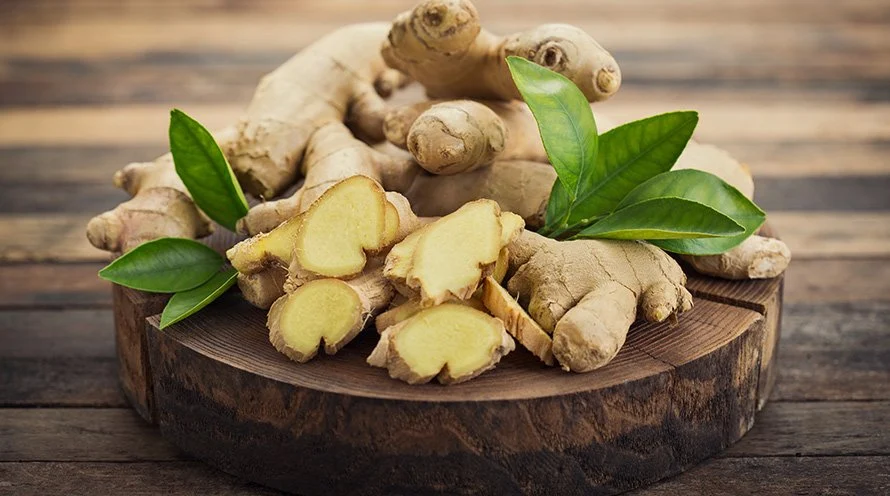
Quick Overview of the Steps to Use Ginger Tea for Period Bloating
- Understand the Science Behind Ginger
Ginger’s anti-inflammatory and digestive properties make it effective for easing period bloating. Its ability to regulate hormones also helps reduce discomfort during your menstrual cycle. - Gather the Ingredients
You’ll need fresh ginger root, water, and optional ingredients like honey, lemon, or cardamom for added flavor. - Prepare Ginger Tea
Boil 2 cups of water, add grated or sliced ginger, and let it simmer for 5-7 minutes. Strain into a cup and add honey or lemon if desired. - Drink Responsibly
Drink ginger tea once or twice a day during your period, but avoid overconsumption to prevent acidity or heartburn. - Pair with Lifestyle Adjustments
Stay hydrated, eat fiber-rich foods, and engage in light exercise like yoga to enhance the effectiveness of ginger tea in reducing bloating. - Monitor the Results
Track how your symptoms change over a few cycles. If bloating decreases, continue using ginger tea. If symptoms persist, consult a healthcare provider.
By following these simple steps, you can naturally manage period bloating and stay connected to time-tested, culturally rooted remedies.
When and How Often Should You Drink Ginger Tea?
For best results, drink ginger tea:
- 1-2 times a day during your menstrual cycle, especially when bloating is at its peak.
- First thing in the morning on an empty stomach or in the evening for a calming effect.
Avoid overconsumption, as too much ginger can sometimes cause heartburn or acidity.
The Cultural Connection: Wisdom Passed Down
In Indian households, natural remedies like ginger tea have been trusted for generations. Whether it’s curing a sore throat or soothing an upset stomach, ginger holds a revered place in Ayurvedic medicine. Our mothers and grandmothers often know the value of these age-old practices, even when modern science is just catching up.
As Indian youth, incorporating these traditional remedies into your lifestyle allows you to stay connected to your roots while addressing modern-day health challenges.
Why Ginger Tea Fits the Lifestyle of Indian Youth
- Quick and Easy to Prepare: With minimal ingredients and effort, ginger tea can be made in minutes, making it perfect for busy students or young professionals.
- Affordable and Accessible: Ginger is readily available in most Indian kitchens, making this remedy cost-effective and convenient.
- Customizable Flavor: You can experiment with add-ons like cardamom, cinnamon, or tulsi to suit your taste preferences.
- Holistic Wellness: Beyond bloating, ginger tea helps with cramps, nausea, and even stress—common challenges faced by Indian youth.
Additional Tips to Combat Period Bloating
While ginger tea is an excellent remedy, combining it with a healthy lifestyle can enhance its effects:
- Stay Hydrated: Drink plenty of water to prevent water retention.
- Reduce Salt Intake: Avoid salty snacks, which can worsen bloating.
- Eat Fiber-Rich Foods: Include fruits, vegetables, and whole grains in your diet to promote digestion.
- Exercise Gently: Yoga and light stretches can help alleviate bloating and cramps.
- Limit Caffeine: Replace coffee with herbal teas like ginger, chamomile, or peppermint during your period.
Conclusion: A Cup of Comfort
Ginger tea is more than just a beverage—it’s a cup of comfort, offering relief from period bloating and other menstrual woes. As an Indian youth navigating the complexities of modern life, embracing this traditional remedy can be a game-changer for your overall well-being.
The next time your period brings along bloating, listen to your mom’s advice and brew yourself a warm, soothing cup of ginger tea. It’s a small act of self-care that can make a big difference.
So, why wait? Give ginger tea a try and experience its magical benefits for yourself!
Disclaimer:
The information provided in this blog is intended for general informational purposes only. While ginger tea has been traditionally used in Ayurvedic medicine and has some proven health benefits, it should not be considered a substitute for professional medical advice, diagnosis, or treatment. Always consult with a healthcare provider before making any significant changes to your diet, especially if you have underlying health conditions or are taking medications.
Individual results may vary, and excessive consumption of ginger can lead to side effects such as heartburn or gastrointestinal discomfort. Please consume ginger tea in moderation.
The external resources linked in this article are for reference purposes and do not necessarily reflect the views or recommendations of the author.
-
5 Reasons Why Drinking Chamomile Tea Can Help Stop Sneezing
Chamomile tea has long been celebrated for its calming effects and numerous health benefits.
For those who struggle with sneezing caused by allergies or colds, this soothing herbal tea might offer more than just comfort—it could provide real relief. In this blog, we’ll explore five key reasons why chamomile tea is a promising natural remedy for sneezing, particularly for young and middle-aged individuals who suffer from seasonal allergies or sensitivities.
Introduction: Sneezing and Its Triggers
Sneezing is a natural reflex that helps the body clear irritants from the nasal passages.
However, frequent sneezing can be frustrating, especially when caused by persistent allergies or colds.
While antihistamines and decongestants are common treatments, many people prefer natural remedies to avoid potential side effects.
Chamomile tea has gained popularity as a gentle and natural solution for sneezing and other allergy-related symptoms.
Its unique properties make it a valuable addition to your wellness routine, especially if you’re looking for ways to reduce discomfort without relying solely on medications.
1. Anti-Inflammatory Properties: Easing Nasal Irritation
One of the primary reasons chamomile tea can help reduce sneezing is its powerful anti-inflammatory properties.
Chamomile contains flavonoids and antioxidants like apigenin, which have been shown to reduce inflammation in the body.
When you experience allergies or a cold, the nasal passages can become inflamed, leading to irritation and frequent sneezing. Drinking chamomile tea can help soothe this inflammation, providing relief from nasal congestion and reducing the frequency of sneezing fits.
- Scientific Insight: A study published in the Journal of Ethnopharmacology highlighted chamomile’s effectiveness in reducing inflammation, making it a promising remedy for respiratory discomfort.
How to Use:
Drink 1-2 cups of chamomile tea daily to calm inflamed nasal passages, particularly during allergy season.\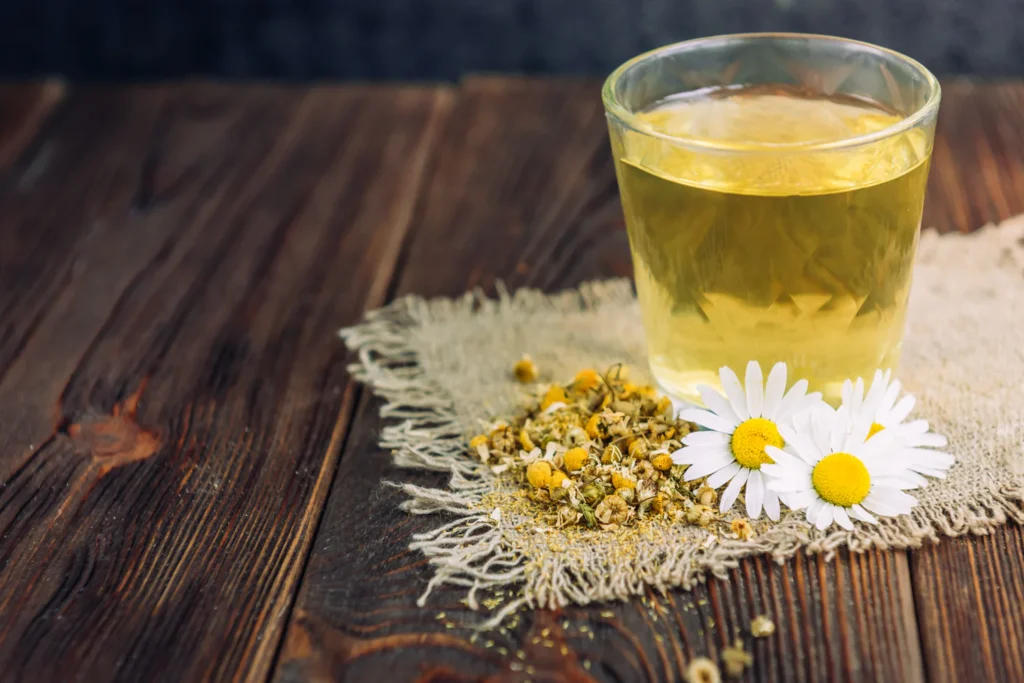
2. Natural Antihistamine: Tackling Allergy Triggers
Histamines are chemicals released by the immune system when it encounters allergens. They are responsible for many allergy symptoms, including sneezing, runny nose, and itching. Chamomile acts as a natural antihistamine, helping to lower histamine levels in the body and reduce the severity of allergic reactions.
- Supporting Research: Chamomile’s ability to inhibit the release of histamines has been documented in several studies, including one in Phytomedicine, which found that chamomile extracts can modulate the body’s immune response to allergens.
For young and middle-aged individuals who suffer from hay fever or seasonal allergies, chamomile tea can serve as a gentle alternative to over-the-counter antihistamines.
Pro Tip: Start drinking chamomile tea a few weeks before allergy season begins to help prepare your body for potential triggers.
3. Soothing Cold Symptoms: Relieving Throat Irritation
Chamomile tea is a go-to remedy for cold symptoms, including sneezing. When you’re under the weather, sneezing is often accompanied by throat irritation and congestion. The warm, soothing properties of chamomile tea can help ease these symptoms.
Chamomile is known for its ability to relax the throat muscles and reduce irritation, which may lessen the urge to sneeze. Its steam, when inhaled, can also help open up the sinuses and reduce nasal congestion.
- Practical Use: To maximize the benefits, consider inhaling the steam from a freshly brewed cup of chamomile tea before drinking it. This dual approach targets both nasal and throat discomfort.
4. Calming Effects: Reducing Stress-Induced Sneezing
Stress can exacerbate allergy symptoms, including sneezing. Chamomile is renowned for its calming effects, making it an excellent choice for individuals whose sneezing may be worsened by stress or anxiety.
The herb contains apigenin, a compound that binds to receptors in the brain and promotes relaxation. By calming the body and mind, chamomile tea may help reduce the frequency of stress-induced sneezing episodes.
- Research Highlight: A review in Molecular Medicine Reports emphasized chamomile’s role in reducing stress and promoting better sleep, both of which are essential for managing allergy symptoms.
Lifestyle Tip: Pair your evening cup of chamomile tea with a mindfulness practice, such as meditation or deep breathing, to enhance its calming effects.
5. Easy to Prepare: A Convenient Remedy
One of the best things about chamomile tea is its simplicity. Unlike many home remedies that require elaborate preparations, chamomile tea can be made quickly and easily, making it an accessible option for busy individuals.
- How to Prepare:
- Boil water and pour it over a chamomile tea bag or dried chamomile flowers.
- Let it steep for 5-10 minutes.
- Optionally, add honey or lemon for extra flavor and health benefits.
This convenience makes it easy to incorporate chamomile tea into your daily routine, ensuring consistent relief from sneezing and other allergy symptoms.
Tips for Maximizing Chamomile Tea’s Benefits
- Choose Quality Ingredients: Opt for organic chamomile tea to avoid pesticides and ensure you’re getting the full health benefits.
- Stay Consistent: Drink chamomile tea regularly, especially during allergy season, to build up its effects over time.
- Combine with Other Remedies: Pair chamomile tea with other natural remedies like honey, ginger, or turmeric for enhanced relief.
Precautions and Considerations
While chamomile tea is generally safe, it’s important to keep the following in mind:
- Allergies: If you’re allergic to plants in the daisy family (e.g., ragweed, marigolds), you may also be allergic to chamomile. Test with small amounts first.
- Pregnancy and Medication: Consult a healthcare provider if you’re pregnant, breastfeeding, or taking medications, as chamomile may interact with certain drugs.
- Overuse: Drinking excessive amounts of chamomile tea can cause drowsiness or mild digestive upset. Stick to 1-3 cups per day.
Where to Find Chamomile Tea Around the World
Chamomile tea is widely available in most parts of the world, making it an accessible remedy no matter where you live. Whether you prefer pre-packaged tea bags, loose-leaf varieties, or even growing your own chamomile, here’s a guide to finding it in different regions:
1. North America
In North America, chamomile tea is a household staple and can be easily found in supermarkets, health food stores, and online retailers. Popular brands like Celestial Seasonings, Yogi Tea, and Traditional Medicinals offer organic options. For those seeking loose-leaf chamomile, stores like Whole Foods Market and specialty tea shops are excellent choices.
If you’re into gardening, chamomile seeds are also readily available at nurseries and online platforms like Amazon. Growing your own chamomile is an affordable and rewarding option for tea enthusiasts.
2. Europe
Chamomile tea has a long history of use in European countries, especially in Germany, where it’s considered a traditional remedy. Pharmacies, supermarkets, and organic food stores typically stock both tea bags and loose-leaf chamomile.
Germany, Poland, and the UK are known for their high-quality herbal teas, so if you’re in Europe, look for local brands like Pukka Herbs or Teekanne. Farmers’ markets often sell dried chamomile flowers, which can be steeped for a fresh, homemade brew.
3. Asia
In Asia, chamomile tea is gaining popularity as a wellness beverage. You can find it in urban areas through health food chains, organic stores, or large supermarket brands like Carrefour and AEON. Online marketplaces like Lazada and Shopee often carry affordable options for tea bags and loose-leaf varieties.
In countries like India and China, traditional medicine shops may also stock chamomile flowers. Chamomile is not as commonly grown in Asia, but herbal tea enthusiasts can purchase seeds from online retailers for home cultivation.
4. Australia and New Zealand
Australians and New Zealanders enjoy a thriving market for organic and health-focused products, making chamomile tea readily accessible. Supermarkets like Woolworths and Coles stock popular brands, while specialty tea shops and organic markets offer high-grade loose-leaf chamomile.
Online tea retailers like T2 and The Tea Centre are also excellent sources for premium chamomile blends. Additionally, community markets in rural areas often sell locally grown chamomile flowers.
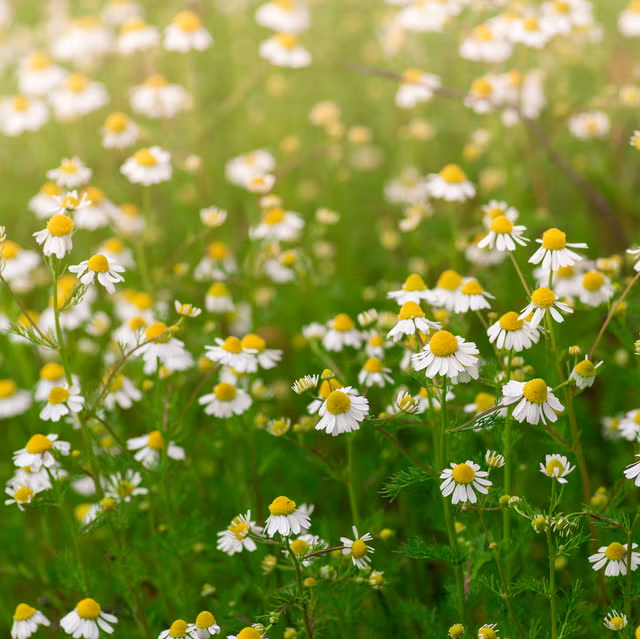
5. Africa
Chamomile tea is not traditionally part of African herbal remedies, but it is available in urban areas and growing in popularity. Major cities often have health food stores or supermarkets like Shoprite and Spar that stock international brands.
Online platforms like Jumia offer a convenient way to purchase chamomile tea in countries where it may not be readily available in local markets. For those in South Africa, retailers like Faithful to Nature specialize in organic teas, including chamomile.
6. South America
In South America, herbal teas are widely consumed, and chamomile tea (known locally as “manzanilla”) is a popular choice. It is commonly available in supermarkets, pharmacies, and herbalist shops. Countries like Argentina and Brazil have strong herbal traditions, and chamomile is often sold fresh, dried, or in pre-packaged tea bags.
If you’re visiting smaller towns, look for chamomile flowers in local markets. Farmers and herbalists often sell them in bulk at reasonable prices.
Online Options for Any Location
No matter where you are, online retailers like Amazon, iHerb, and specialty tea shops ship chamomile tea worldwide. These platforms often offer a wide selection, from budget-friendly tea bags to premium loose-leaf blends. Be sure to check reviews and certifications to ensure the quality and authenticity of the product.
By knowing where to find chamomile tea in your region, you can enjoy its benefits with ease. Whether you prefer the convenience of tea bags or the freshness of loose flowers, chamomile tea is a versatile remedy that can fit seamlessly into your lifestyle.
Conclusion: A Gentle Yet Effective Remedy
Chamomile tea is more than just a comforting beverage—it’s a powerful ally against sneezing and other allergy-related symptoms. From its anti-inflammatory and antihistamine properties to its soothing effects on the mind and body, chamomile tea offers a natural and holistic approach to managing sneezing.
For young and middle-aged individuals seeking relief from allergies or colds, chamomile tea is a safe, affordable, and effective option. By incorporating it into your daily routine, you can enjoy not only its health benefits but also the ritual of a warm, calming cup of tea.
So the next time you find yourself sneezing uncontrollably, consider reaching for chamomile tea—it just might be the natural solution you’ve been looking for.
Alternatives to Chamomile Tea for Sneezing Relief
While chamomile tea is an effective natural remedy, there are several other herbal teas and remedies you can try to alleviate sneezing caused by allergies or colds. Each has its unique properties that can provide soothing relief and additional health benefits.
1. Peppermint Tea

Why it Works: Peppermint tea contains menthol, which acts as a natural decongestant. It helps clear nasal passages, making it easier to breathe and reducing sneezing caused by allergies or respiratory infections.
How to Use:
- Brew peppermint leaves in hot water for 5–7 minutes.
- Sip the tea while inhaling the steam for added relief.
2. Ginger Tea
Why it Works: Ginger has anti-inflammatory and antihistamine properties that can help soothe irritated nasal passages and reduce sneezing. It’s also known to strengthen the immune system.
How to Use:
- Slice fresh ginger root and steep it in boiling water for 10 minutes.
- Add honey and lemon for extra soothing effects.
3. Green Tea
Why it Works: Green tea is rich in antioxidants and contains compounds that inhibit histamine production, making it an excellent choice for allergy relief. It also boosts overall immunity.
How to Use:
- Steep green tea leaves or a tea bag in hot water for 3–5 minutes.
- Enjoy it warm or iced for relief.
4. Turmeric Milk (Golden Milk)
Why it Works: Turmeric is a potent anti-inflammatory and antioxidant that can reduce nasal irritation and strengthen the body’s defenses against allergens. Combining it with milk enhances its absorption and soothing effects.
How to Use:
- Heat a cup of milk (dairy or plant-based) and add a teaspoon of turmeric powder.
- Sweeten with honey or jaggery, if desired.
5. Rooibos Tea
Why it Works: Rooibos is a South African herbal tea known for its natural antihistamine properties. It helps alleviate sneezing and other allergic symptoms without causing drowsiness.
How to Use:
- Brew rooibos tea in hot water for 5 minutes.
- Add a slice of lemon or honey for a flavor boost.
6. Lemon and Honey Water
Why it Works: Lemon is rich in Vitamin C, which boosts immunity, while honey has antimicrobial and soothing properties that ease throat irritation and reduce sneezing.
How to Use:
- Squeeze half a lemon into warm water and add a tablespoon of honey.
- Drink this mixture in the morning or whenever symptoms arise.
7. Eucalyptus Steam Inhalation
Why it Works: Eucalyptus oil helps open nasal passages, reduces inflammation, and alleviates sneezing. Though not a tea, it’s an excellent natural remedy to complement your routine.
How to Use:
- Add a few drops of eucalyptus oil to a bowl of hot water.
- Cover your head with a towel and inhale the steam for 5–10 minutes.
8. Licorice Root Tea
Why it Works: Licorice root has anti-inflammatory and soothing properties that can calm nasal irritation and reduce sneezing caused by allergies or colds.
How to Use:
- Steep licorice root in boiling water for 10 minutes.
- Strain and drink while warm.
9. Thyme Tea
Why it Works: Thyme tea is an antimicrobial and decongestant remedy that can help clear mucus and reduce sneezing.
How to Use:
- Steep fresh or dried thyme leaves in hot water for 5–7 minutes.
- Strain and enjoy with honey for added benefits.
10. Local Honey
Why it Works: Consuming local honey regularly may help build immunity to local allergens, reducing sneezing over time.
How to Use:
- Take a teaspoon of local honey daily, either on its own or mixed into warm water or tea.
Conclusion
While chamomile tea is an excellent remedy for sneezing relief, these alternatives offer a variety of options to suit different tastes and preferences. Whether you opt for peppermint tea, turmeric milk, or eucalyptus steam, incorporating these remedies into your routine can provide natural, soothing relief from sneezing. Remember to consult a healthcare professional for persistent or severe symptoms to ensure you’re addressing the root cause effectively.
Here are some trusted sources for reference:
- Health Shots: Chamomile Tea for Sneezing
- Artful Tea: Chamomile Tea Benefits
- Wyndly: Home Remedies for Sneezing
- Teaniru: Chamomile Tea Benefits
- PubMed: Chamomile’s Medicinal Properties
- Medical News Today: Chamomile and Cold Relief
- Medical News Today: Natural Antihistamines
- National Library of Medicine: Chamomile’s Health Benefits
These links provide reliable information about chamomile tea and its potential benefits for managing sneezing and related symptoms.
-
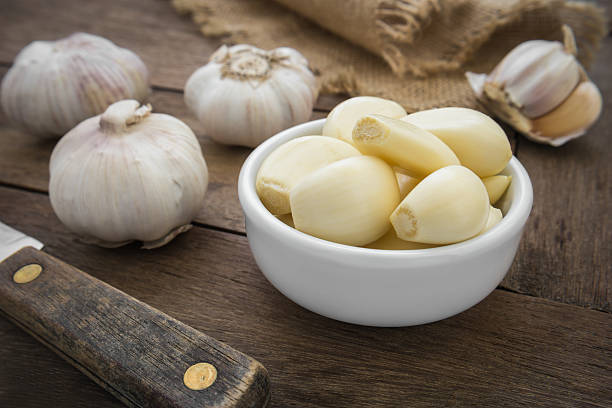
Garlic is an effective home remedy for UTI, says my mom
Disclaimer: This blog does not provide any medical advice. The information given is solely for educational purposes. Always consult a healthcare professional for any medical concerns.
If you are someone, who is currently pregnant it is always advisable to seek health from your medical professional before considering this option because the urinary tract during the period of pregnancy disposes to a multitude of problems to both mother and fetus.
Garlic as a Remedy for UTI: Natural Relief for Urinary Tract Infections
Urinary Tract Infections (UTIs) are a common health issue that affects millions of people worldwide. Characterized by symptoms like a burning sensation during urination, frequent urges to urinate, and lower abdominal pain, UTIs can disrupt daily life. according to statistics, women are more affected by UTIs than men due to the peculiar anatomy of the female genital tract. While antibiotics are the go-to treatment, natural remedies like garlic have been gaining attention for their potential role in alleviating UTI symptoms.
What Makes Garlic a Powerful Ally for UTIs?
Garlic (“Allium sativum”) has long been recognized for its medicinal properties. It contains allicin, a sulfur compound that gives garlic its distinctive smell and potent antibacterial, antifungal, and antimicrobial properties. Allicin is the key ingredient that helps combat the bacteria responsible for UTIs, such as Escherichia coli (E. coli).
Scientific Evidence Supporting Garlic for UTIs
Several studies have highlighted garlic’s antimicrobial properties and its ability to inhibit the growth of UTI-causing bacteria:
- Research on Antibacterial Properties: A study published in the Iranian Journal of Microbiology demonstrated that garlic extract showed significant antibacterial activity against multi-drug-resistant strains of E. coli.
- Comparison with Conventional Antibiotics: A study in the Avicenna Journal of Phytomedicine found that garlic extract could be effective against both Gram-positive and Gram-negative bacteria, including those resistant to antibiotics.
- Urinary Health Benefits: Garlic’s diuretic properties may help flush out bacteria from the urinary tract, further aiding in UTI recovery. Diuretics, substances that promote the production of urine, can help the body eliminate toxins and bacteria more efficiently. This process supports the urinary tract in staying clean and reduces the risk of infection.
How to Use Garlic for UTI Relief
Here are some practical ways to incorporate garlic into your routine to help alleviate UTI symptoms:
1. Garlic Tea
- Ingredients:
- 2-3 fresh garlic cloves
- 1 cup of water
- Honey or lemon (optional, for taste)
- Instructions:
- Crush the garlic cloves to release allicin.
- Boil water and pour it over the crushed garlic.
- Let it steep for 10 minutes.
- Strain and drink the tea. Optionally, add honey or lemon for flavor.
2. Raw Garlic
Eating raw garlic is one of the most effective ways to harness its antimicrobial properties.
- How to Use:
- Crush 1-2 garlic cloves and let them sit for 5-10 minutes to activate the allicin.
- Swallow them with a glass of water. If the taste is too strong, follow up with a slice of bread or a spoonful of honey.
3. Garlic Capsules or Supplements
If consuming raw garlic is unappealing, garlic capsules or supplements are a convenient alternative.
- Dosage: Consult a healthcare provider for the recommended dosage based on your needs.
4. Garlic Infused Water
- Ingredients:
- 3-4 garlic cloves
- 1 liter of water
- Instructions:
- Crush the garlic cloves and add them to a bottle of water.
- Let the mixture sit overnight.
- Drink the infused water throughout the day.
5. Garlic Oil
Garlic oil can be used topically to relieve discomfort associated with UTIs.
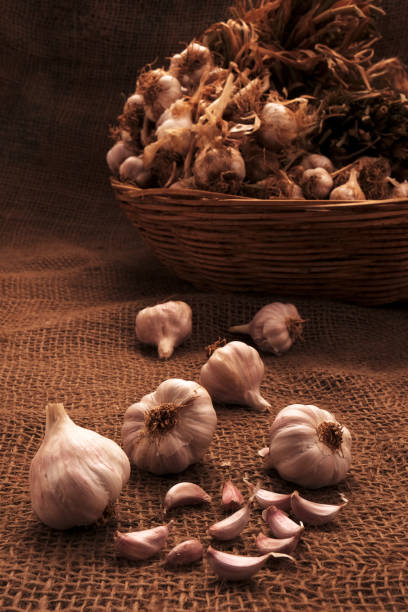
Organic Garlic Cloves and Bulb in wooden basket. - How to Use:
- Dilute garlic oil with a carrier oil like coconut oil.
- Apply the mixture to the lower abdomen to help reduce inflammation.
Precautions When Using Garlic
While garlic is a natural remedy, it’s important to use it wisely:
- Allergic Reactions: Some individuals may be allergic to garlic. Discontinue use if you experience itching, rash, or swelling.
- Strong Taste: The pungent flavor of garlic may be off-putting to some. Start with small amounts and gradually increase.
- Drug Interactions: Garlic may interact with blood-thinning medications. Consult your doctor before using garlic as a remedy if you’re on any prescription drugs.
- Stomach Sensitivity: Consuming large amounts of raw garlic may cause stomach upset. Always start with moderate quantities.
Other Lifestyle Tips to Manage UTIs
While garlic can be an effective natural remedy, combining it with other healthy practices can expedite recovery and prevent recurrence:
- Stay Hydrated: Drinking plenty of water helps flush out bacteria from the urinary tract.
- Hygiene Practices: Wipe front to back to reduce the risk of bacterial spread.
- Urinate Regularly: Don’t hold your urine, as this allows bacteria to multiply in the bladder.
- Avoid Irritants: Limit caffeine, alcohol, and spicy foods that can irritate the bladder.
Conclusion
Garlic is a time-tested natural remedy with powerful antibacterial properties that may help alleviate UTI symptoms and support urinary health. Whether consumed raw, as tea, or in supplement form, garlic provides a simple and accessible way to complement conventional treatments. However, it’s essential to listen to your body and consult a healthcare professional if symptoms persist or worsen.
Incorporating garlic into your diet not only supports UTI recovery but also enhances overall health, making it a valuable addition to any wellness routine. So, the next time you’re looking for a natural solution, give garlic a try and experience its benefits firsthand.
Here are some relevant studies and resources on garlic’s role in UTI management and its medicinal properties:
- Study on Antibacterial Properties of Garlic
- Title: “Antibacterial properties of garlic against multidrug-resistant bacteria”
- Source: Iranian Journal of Microbiology
- Link: Read the study
- Garlic’s Effectiveness Against E. coli
- Title: “Evaluation of the antibacterial effect of garlic extract on Escherichia coli strains isolated from urinary tract infections”
- Source: Avicenna Journal of Phytomedicine
- Link: Read the study
- Research on Garlic as an Antimicrobial Agent
- Title: “The antimicrobial activity of allicin from garlic”
- Source: Microbes and Infection
- Link: Read the study
- Garlic and Diuretic Properties
- Title: “Garlic’s role in traditional medicine as a diuretic”
- Source: International Journal of Herbal Medicine
- Link: Read the study
- Nutritional Profile and Health Benefits of Garlic
- Title: “Garlic as a functional food: Nutritional and health benefits”
- Source: Critical Reviews in Food Science and Nutrition
- Link: Read the study
-

6 Homemade Remedies to Remove Tan: Natural and Effective Solutions
Tan removal is a common skincare concern, especially for those who spend time outdoors. Whether from working in the garden, taking a stroll in the sun, or enjoying a day at the beach, prolonged sun exposure can lead to unwanted dark spots and skin discoloration.
While commercial products offer tan removal solutions, many people prefer natural, homemade remedies to lighten their skin in a gentler way. If you’re looking to remove tan naturally, these 6 homemade remedies can help you restore your skin’s natural glow.
These remedies are not only simple but are also made from ingredients you likely already have in your kitchen. So let’s dive into these natural ways to remove tan and achieve healthy, glowing skin!
I still remember the days when I would return from the bazaar, my skin feeling uneven and dull from hours of sun exposure.
The tan would settle in, leaving my complexion patchy, and no matter how much I tried to avoid the sun, it seemed impossible to escape its effects. Just like many others,
I struggled with uneven skin tone, but over time, I discovered natural ways to combat this and restore my skin’s radiance. If you’ve ever faced the same issue of uneven skin tone after a day outdoors, you’ll know just how frustrating it can be.
Fortunately, there are several simple and effective homemade remedies that can help lighten your skin and bring back that natural glow.
1. Lemon and Honey: A Brightening Duo
Lemon, with its natural bleaching properties, is a well-known remedy for reducing tan. When combined with honey, which is a natural humectant, the mix helps in skin lightening, while also keeping the skin hydrated and smooth. This remedy works wonders in fading tan over time.
What You Need:
- 1 tablespoon of lemon juice
- 1 tablespoon of honey
Steps:
- Mix lemon juice and honey to form a smooth paste.
- Apply this mixture evenly to the affected tanned areas such as your face, arms, and legs.
- Leave it on for about 15-20 minutes before rinsing off with lukewarm water.
Why It Works:
Lemon’s citric acid helps in lightening pigmentation, and honey’s soothing properties ensure your skin doesn’t get dried out in the process. Together, they help fade tan and restore the natural glow of your skin.
2. Turmeric and Milk: Ancient Skin Brightening
Turmeric is a revered ingredient in many cultures for its anti-inflammatory and skin-brightening properties. Combined with milk, this age-old remedy helps lighten tan and rejuvenate the skin. The lactic acid in milk gently exfoliates the skin, while turmeric promotes a brighter complexion.
What You Need:
- 1 teaspoon of turmeric powder
- 2 tablespoons of milk
Steps:
- Mix turmeric powder and milk to make a thick paste.
- Apply the paste to the tanned areas of your skin, including your face, arms, or legs.
- Let the paste sit for 20 minutes, then rinse off with warm water.
Why It Works:
Turmeric helps lighten skin by inhibiting the production of melanin, the pigment responsible for tanning. Milk, on the other hand, exfoliates the skin and nourishes it, making this remedy ideal for those looking for natural skin rejuvenation.
3. Sandalwood and Rose Water: Cooling and Healing
Sandalwood is widely known for its cooling and skin-brightening properties, making it a great choice for tan removal. Rose water, with its hydrating and refreshing qualities, complements sandalwood perfectly to soothe and heal the skin, leaving it brighter and more even-toned.
What You Need:
- 1 tablespoon of sandalwood powder
- 1-2 tablespoons of rose water
Steps:
- Mix sandalwood powder with rose water to create a smooth paste.
- Apply this paste to your face or any tanned areas on your skin.
- Leave it on for about 15-20 minutes and then rinse with cool water.
Why It Works:
Sandalwood not only helps lighten dark spots and pigmentation but also has anti-inflammatory properties that can soothe irritated skin. Rose water enhances the effects by providing additional hydration and calming the skin.
4. Cucumber: A Refreshing Tan Remover
Cucumber is known for its cooling and hydrating properties. Its high water content makes it an excellent remedy for soothing sunburns and reducing the tan caused by sun exposure. If your skin feels irritated after spending time under the sun, cucumber can work wonders.
What You Need:
- 1 fresh cucumber
Steps:
- Slice the cucumber into thin rounds or crush it to extract fresh juice.
- Apply the cucumber juice or place the slices directly on the tanned skin.
- Leave it on for about 15-20 minutes and then rinse off with cool water.
Why It Works:
Cucumber helps in soothing sunburns and tan while providing intense hydration to the skin. The antioxidants and vitamins in cucumber promote skin rejuvenation, helping to lighten tanned areas.
5. Gram Flour and Turmeric Scrub: Exfoliate and Lighten
When it comes to effective tan removal, exfoliation plays a key role. Gram flour (besan) and turmeric are one of the oldest and most popular combinations used for this purpose. This scrub not only removes the dead skin cells but also helps lighten tan by promoting skin brightness.
What You Need:
- 2 tablespoons of gram flour
- A pinch of turmeric
- Water or rose water
Steps:
- Mix gram flour and turmeric with enough water or rose water to form a thick paste.
- Gently apply the paste to the tanned areas and massage it in circular motions for a couple of minutes.
- Let it dry for 10-15 minutes, then scrub it off by wetting your fingers with water.
Why It Works:
Gram flour acts as a natural exfoliant, removing dead skin and revealing fresh skin underneath. Turmeric helps to lighten dark spots and tan, while also providing a subtle glow. This scrub is ideal for removing tan and providing an instant glow.
6. Aloe Vera: Nature’s Tan Healer
Aloe vera is a well-known miracle plant that offers a wide range of skin benefits. Its soothing, cooling, and hydrating properties make it the perfect remedy for sunburn and tan. Aloe vera also promotes skin healing, helping to reduce pigmentation and restore the natural tone of your skin.
What You Need:
- Fresh aloe vera gel (from the plant)
Steps:
- Extract the gel from a fresh aloe vera leaf.
- Apply the gel directly to your tanned skin.
- Leave it on overnight or for at least 30 minutes before rinsing off with lukewarm water.
Why It Works:
Aloe vera contains vitamins and antioxidants that help in skin repair and lightening. It not only soothes sunburn but also reduces pigmentation and helps rejuvenate skin. Aloe vera is especially effective for those looking for a cooling remedy after sun exposure.
Conclusion: Embrace the Power of Natural Ingredients
Incorporating these natural remedies into your skincare routine can be a wonderful way to remove tan without harsh chemicals. These remedies, made with ingredients found in your kitchen, are not only effective but also gentle on your skin. Regular use of these treatments can help fade tan, brighten your complexion, and improve overall skin health.
The key to achieving the best results is consistency. Whether you choose to use aloe vera, turmeric, or lemon and honey, make sure to follow a skincare routine and protect your skin from further sun exposure by wearing sunscreen.
These remedies will not only help you remove tan, but they’ll also help you nourish and pamper your skin, restoring its natural glow. So, give these remedies a try, and let your skin bask in the goodness of natural skincare!
A note on sunscreen:
While these remedies are effective for lightening tan, they cannot prevent further tanning caused by sun exposure. Always apply a broad-spectrum sunscreen with SPF 30 or higher to protect your skin from harmful UV rays.
By incorporating these simple, natural ingredients into your skincare routine, you can effectively remove tan and achieve glowing, healthy skin. These methods have been trusted for generations and offer a safe and natural alternative to harsh chemical treatments. Enjoy the benefits of nature’s bounty, and let your skin shine!

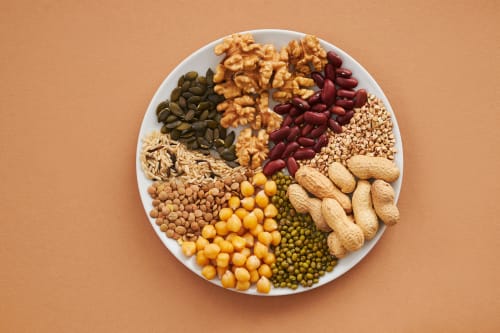





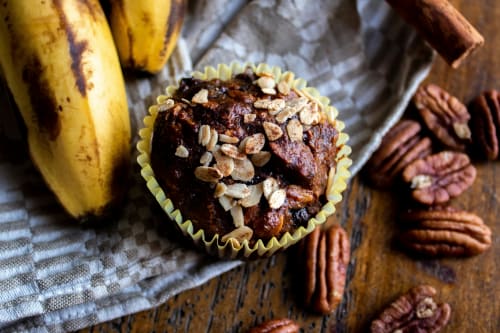


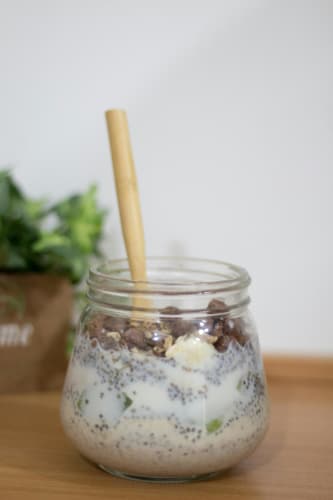
Leave a Reply to Period Bloating: 6 Natural Remedies to Feel Better | A Youth's Guide Cancel reply